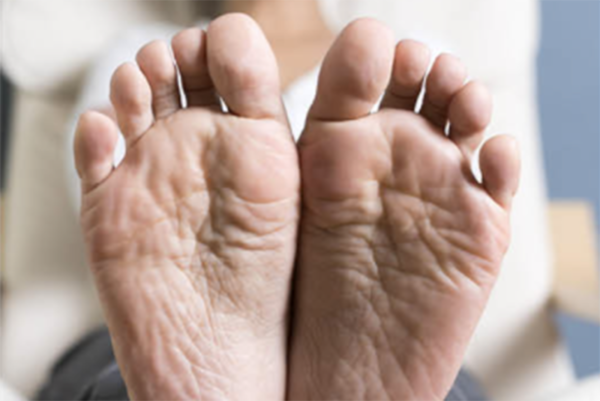Aging Right @ Home is a monthly blog series, answering your questions on providing care for individuals with disabilities, loved ones with dementia and older adults aging in place. If you have a question, please submit it to [email protected].
 Did you know that our bodies have 206 bones, and 52 of those bones are in our feet?! The job our feet do is complicated as well. They support our body weight, which adds up to tons of pressure every day as we move around. They push us forward, act as shock absorbers and even provide our brains with information about the position of our bodies, which is necessary for good balance.
Did you know that our bodies have 206 bones, and 52 of those bones are in our feet?! The job our feet do is complicated as well. They support our body weight, which adds up to tons of pressure every day as we move around. They push us forward, act as shock absorbers and even provide our brains with information about the position of our bodies, which is necessary for good balance.
With all this complexity, it’s no surprise that things can go wrong. The American Geriatrics Society says one-third of people older than 65 have problems with their feet. Podiatrists see more older patients than any other age group. Normal changes of aging are partly to blame, but common health conditions also affect our feet — these include osteoporosis, obesity, arthritis, circulation problems and/or diabetes.
If your elder loved one is experiencing any symptoms of foot discomfort, here are seven steps to providing better foot care for older adults:
- Inspect feet regularly. Look for cuts, redness, swelling, and any changes to nails or skin.
- Apply lotion to the feet as recommended to prevent cracks and calluses — but not between the toes as this could lead to infection.
- Trim toenails straight across and smooth edges with an emery board. If toenails are thick or you have a fungal infection or diabetes, it’s best to have the podiatrist trim your nails.
- Wear properly fitted shoes. Shoes are a frequent culprit for foot discomfort and other issues — have shoes professionally fitted.
- Always wear clean, dry socks. Ask your doctor if natural fibers or fabrics that wick moisture might be the best choice for you. Padded socks also may be recommended.
- Exercise your feet. Stretches and resistance activities can make feet stronger and more flexible (but talk to your doctor first).
- Lastly, if at all needed, you can also seek professional help. That may be in the form of a podiatrist who will offer a wide variety of treatments for the foot, ankle and related structures of the leg. In addition to a podiatrist, professional in-home caregivers can also assist with many aspects of hygiene, including foot care, to help alleviate concerns. Professional caregivers can also provide transportation to the podiatrist and other medical appointments. They provide companionship and supervision during exercise. And they help with all-around wellness for clients with diabetes.
Contact me today at Right at Home if you’d like a care consultation, or if I’m able to provide any other assistance to you and your family.
Your neighbor, and Owner/President of Right at Home of Northern Virginia,
Phillip Turner, CDP, CSA



